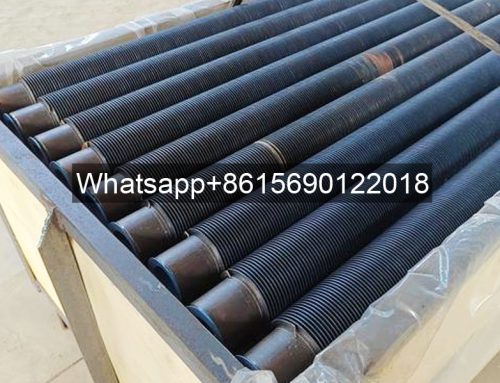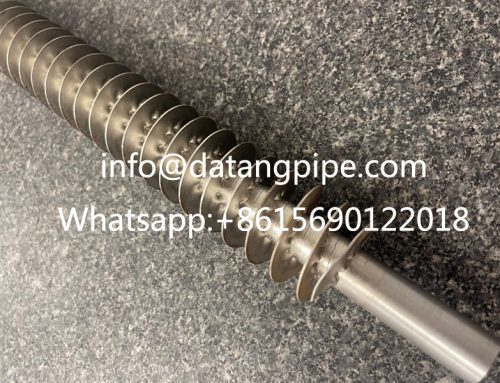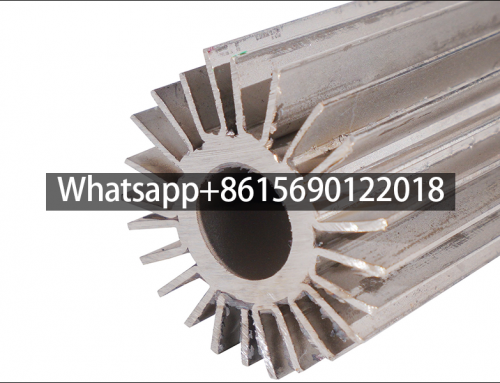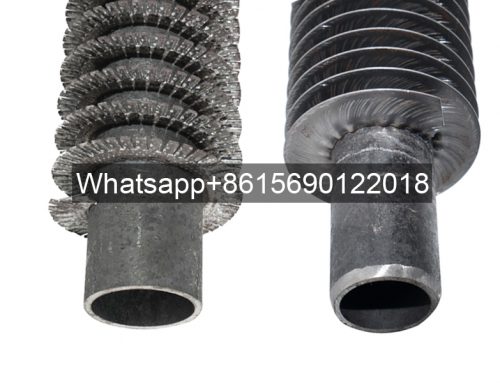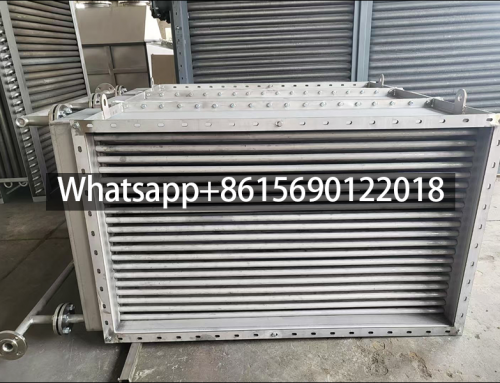Classification of heat exchangers
Heat exchanger (also known as heat exchanger or heat exchange equipment) is used to make heat transfer from hot fluid to cold fluid to meet the specified process requirements of the device, is the convective heat transfer and heat transfer of an industrial application.
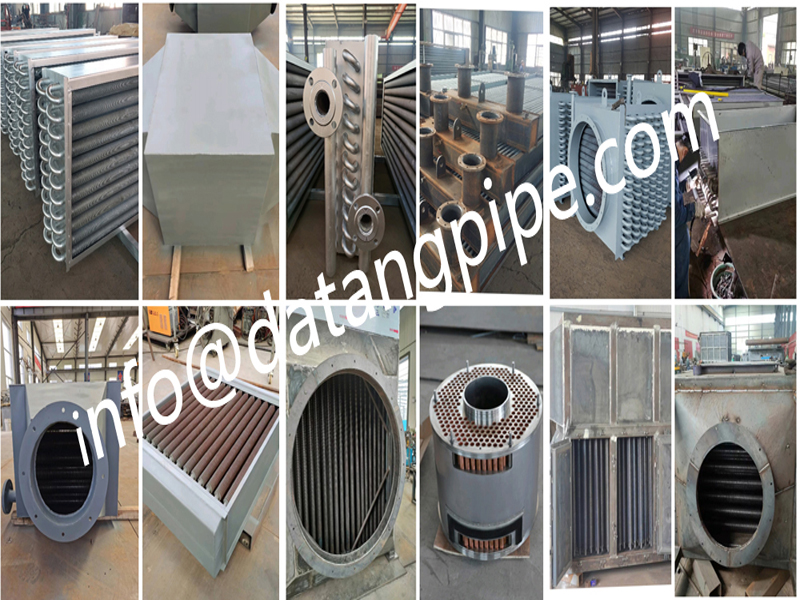
1.Double tube heat exchanger
Double tube heat exchanger is a combination of straight tubes of different diameters in a coaxial line. The advantages of this heat exchanger are simple construction, the inner tube can withstand high pressure, the heat transfer area can be increased or decreased as needed. Appropriate selection of the diameter of the two tubes, you can make the two fluids to obtain the appropriate flow rate, and the two fluids can be strictly countercurrent, thus making the average logarithmic temperature difference greatly increased. However, it has the disadvantage that there are more joints between the tubes, which can easily lead to leakage, and the heat transfer area per unit heat exchanger volume is small. Therefore, it is suitable for flow is not large, heat transfer area requirements are not high but the pressure requirements of the occasion.
2. Tube heat exchanger
Tube heat exchanger is a common heat transfer equipment, mainly including casing type, spiral tube type, shell and tube and heat pipe type and other types. Among them, U-tube heat exchanger will bend each tube into a U shape and fixed on the same tube plate, this design can be free to expand and contract, effectively solve the thermal compensation problem. Heat pipe heat exchanger, on the other hand, consists of a sealed metal tube, filled with working liquid inside, through the process of boiling vaporization, steam flow and steam condensation to achieve the transfer of heat. This kind of heat exchanger has the advantages of simple structure, long service life, reliable work, etc. It is suitable for low-temperature difference heat transfer and certain isothermal requirements of high occasions.
3.Plate heat exchanger
Plate heat exchanger is a kind of widely used heat exchanger equipment, mainly composed of heat transfer plate and sealing gasket. This type of heat exchanger exchanges heat through heat conduction, convection and radiation in three ways. It is characterized by high heat capacity, compact structure, small footprint, long service life, and is made of different materials according to the physical and chemical properties of different media. In addition, plate heat exchanger also includes spiral plate and plate and shell type and other types.
4. Heat storage heat exchanger
Thermal storage heat exchanger is a kind of equipment that transfers heat by alternating hot and cold fluids through the same channel. It utilizes the solid material composition of the heat storage body, from high temperature to low temperature transfer of energy. This type of heat exchanger mainly consists of heat accumulators such as lattice bricks or fillers to accomplish the energy transfer. First, the hot fluid passes through, storing heat in the heat reservoir, and then the cold fluid passes through, taking away the heat. Due to the alternating conversion of hot and cold fluids, there is a fluid mixing phenomenon, which may lead to “fluid pollution”. Its compact structure, low price, large heat transfer surface per unit volume, suitable for gas-gas heat exchange, especially in petrochemical and air waste heat applications.
5. Floating head heat exchanger
Floating head heat exchanger is a complex structure but widely used heat exchange equipment. It is characterized by the fact that the tube sheet at one end can float freely, and this design completely eliminates the influence of thermal stress. In addition, since the tube plate at the fixed end is connected to the shell by a flange, the entire tube bundle can be withdrawn from the shell, thus facilitating cleaning and overhauling. This type of heat exchanger can circulate dirty fluids on both the tube side and the shell side, and thus has a wide range of applications in fields such as oil refining. But at the same time, due to its complex structure, resulting in relatively high cost.
6. Between the wall type heat exchanger
Between the wall type heat exchanger is a fixed wall (called heat transfer surface) separated by two different temperature fluid heat exchange equipment. This heat exchanger using the wall of thermal conductivity and fluid convection on the wall surface to achieve heat transfer, to ensure that cold and hot fluids will not mix. The heat transfer surfaces are usually made of metals with good thermal conductivity, but in some cases where corrosion protection is required, non-metallic materials such as graphite or polytetraethylene may also be used. Inter-wall heat exchangers are available in a variety of configurations, including tube and plate, and are one of the most widely used types of heat exchangers in industrial manufacturing today.
7. Direct contact heat exchanger
A direct contact heat exchanger is a device that realizes heat transfer by direct contact and mixing of two fluids. This kind of heat exchanger is also called mixed heat exchanger, usually used in gas condenser and cold water tower. The main working principle is that the two media are in contact and transfer heat to each other to realize heat transfer. The contact area directly affects the amount of heat transfer, usually a medium is a gas, the other is a liquid, for example, in the cool water tower, hot water and air in direct contact with the process of heat and mass transfer, to achieve the purpose of cooling water.
8. Fixed tube plate heat exchanger
Fixed tube and plate heat exchanger is a simple structure, low-cost heat exchanger equipment, its tube bundle at both ends of the tube plate and shell welded together. This design allows the heat exchanger to arrange the most heat exchanger tubes in the same shell diameter, and each heat exchanger tube can be easily replaced and cleaned. However, the disadvantages are that the shell process cannot be mechanically cleaned, and when the temperature difference between the heat exchanger tubes and the shell is large it generates temperature differential stresses and requires expansion joints in the shell. Therefore, it is suitable for the shell side of the fluid is clean, not easy to scale, the two fluid temperature difference is not large or temperature difference is large but the shell pressure is not high occasions.
9. Shell and tube heat exchanger
Shell and tube heat exchanger is a typical inter-wall heat exchanger, consisting of shell, heat transfer tube bundle, tube plate, folding plate and tube box and other components. The working principle is to use the wall of the tube bundle as the heat transfer surface for heat transfer of hot and cold fluids. One kind of fluid flows in the tube, called tube course fluid; another kind of fluid flows outside the tube, called shell course fluid. To enhance heat transfer, folding plates are usually installed inside the shell to increase the fluid velocity and turbulence. In addition, the type and wall thickness of the tubes can be selected as required to optimize the heat transfer efficiency. It is widely used because of its simple structure, reliable operation, and can be manufactured with a variety of structural materials, especially at high temperature and high pressure.
10. Spray heat exchanger
Spray heat exchanger is a commonly used cooler, its structure is simple, cheap, and can withstand high pressure. Hot fluid in the tube from the bottom up flow, while the cooling water from the top of the spray device evenly showered down along the surface of the tube, and vaporized in the air, taking away some of the heat, thereby enhancing the cooling effect. This heat exchanger has the advantage of good heat transfer, easy maintenance and cleaning. But the disadvantage is that the cooling water spray may not be uniform, affecting the heat transfer effect, and can only be installed outdoors.
11.Tube heat exchanger
Tube heat exchanger, also known as shell and tube heat exchanger, is a typical representative of inter-wall heat exchanger, with a long history and dominant position. Its advantages lie in the large heat transfer area per unit volume, good heat transfer effect, sturdy structure, wide range of optional structural materials, and large operating flexibility, so it is widely used in large-scale installations. Its structure mainly includes shell, tube bundle, tube plate, folding baffle and head. One kind of fluid flows inside the tube, called tube course; another kind of fluid flows outside the tube, called shell course. According to the temperature difference compensation measures, tube heat exchanger can be divided into fixed tube and plate type and floating head type two.
12. Fluid connection indirect heat exchanger
Fluid connection indirect heat exchanger is a heat carrier connected to two surface heat exchanger equipment. The working principle of this type of heat exchanger is that the heat carrier circulates between the high-temperature fluid heat exchanger and the low-temperature fluid, so that the high-temperature fluid receives heat and the low-temperature fluid releases heat. This type of heat exchange is widely used because of its high efficiency. Compound heat exchanger has steam-water surface indirect heat transfer and water-water direct mixing heat transfer two ways, compared with the steam-water direct mixing heat transfer, its working efficiency is more stable, less noise.
13. Mixed heat exchanger
Mixed heat exchanger is a cold and hot fluid through direct contact for heat transfer equipment. This type of heat transfer eliminates the fouling thermal resistance between the heat transfer wall and its sides, so that when the fluid contact situation is good, a high rate of heat transfer can be realized. Hybrid heat exchanger is used in a wide range of application scenarios, such as scrubbing and cooling of gases, cooling of circulating water, vapor-water mixing and heating, and condensing of steam. In addition, it is widely used in many fields such as chemical industry, metallurgy, power engineering and air conditioning.
14. Immersed serpentine tube heat exchanger
Immersed serpentine tube heat exchanger is a metal tube bent into the shape of the container, and immersed in the liquid in the container heat exchanger. Its advantages are that it has a simple structure, can withstand high pressure, and can be manufactured using corrosion-resistant materials. However, it has the disadvantage that the degree of turbulence of the liquid inside the vessel is low, resulting in a small heat-giving coefficient outside the tube. In order to increase the heat transfer coefficient, agitators can be installed inside the vessel.
15.Extended Surface Heat Exchanger
An extended surface heat exchanger is a device that exchanges heat between two fluids by heat conduction at the wall surface and convection of the fluid at the wall surface. This type of heat exchanger is available in a variety of models, including but not limited to shell and tube and casing. The principle of operation is that two fluids with different temperatures flow in a space separated by a wall surface, and heat transfer between the two fluids is accomplished by thermal conduction of the wall surface and convection of the fluids on the wall surface. This type of heat exchange is characterized by high efficiency and compactness, and is widely used in various industrial and civil fields.
16. Jacketed heat exchanger
Jacketed heat exchanger is a kind of heat exchanger made of jacket installed on the outer wall of the container, mainly used for heating or cooling of the reaction process. Its structure is simple, but the heat transfer surface is limited by the vessel wall, resulting in a small heat transfer coefficient. In order to improve the heat transfer coefficient and make the liquid in the kettle heated uniformly, it can be installed in the kettle stirrer or snake tube. When cooling water or heating agent without phase change is passed into the jacket, spiral spacer or other measures to increase turbulence can also be installed to improve the heat giving coefficient.
17. Preheater
A preheater is a type of heat exchanger used to preheat a fluid and is designed to provide standardized process parameters for process operations. Its core function is to increase the efficiency of the complete process plant. Unlike a superheater, a preheater does not heat the fluid to a superheated state, but rather heats it to a temperature suitable for the process operation. This preheating process ensures that the process parameters are standardized, thus optimizing the entire process.


